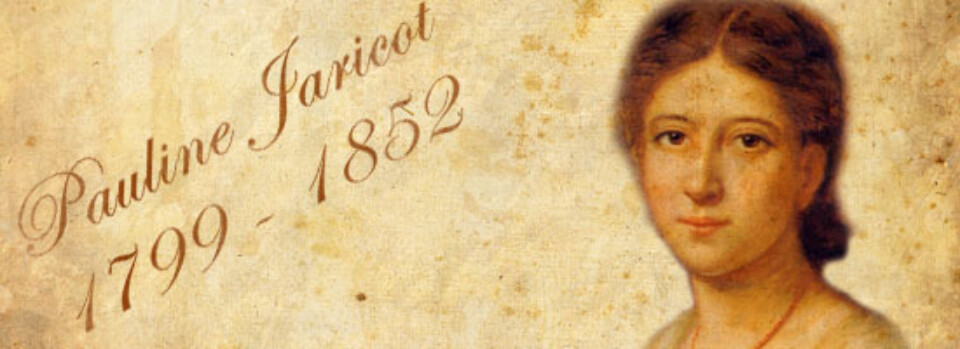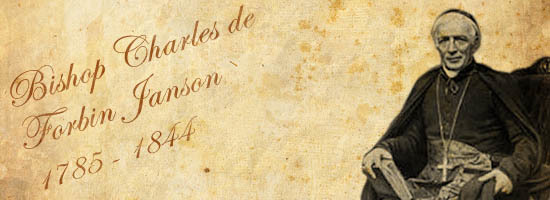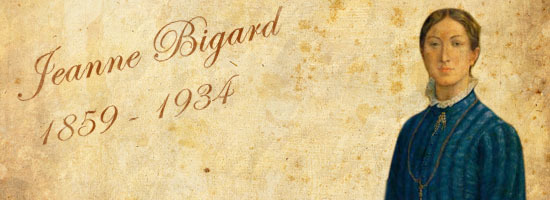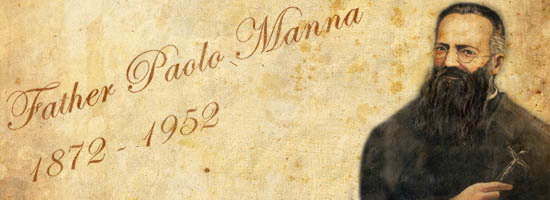
The Pontifical Mission Societies
Our History - One Woman's Vision
 It's 1822. You're in France, just after the French Revolution. Times are tough for the local Church, still suffering after years of persecution.
It's 1822. You're in France, just after the French Revolution. Times are tough for the local Church, still suffering after years of persecution.
But not as tough as the extreme poverty faced by missionaries in far-flung lands. They desperately need help.
That was the situation faced by a young single woman, Pauline Jaricot. She was no sister or saint, but simply one person with a vision to help, the passion to act, and the enthusiasm to involve others.
From humble beginnings the first Pontifical Mission Society was started...
the Society for the Propagation of the Faith - to support the worldwide work of missionaries where the need was greatest. It soon became the largest mission agency in the world, and remains so today. Twenty-one years later, Pauline's vision inspired Bishop Charles de Forbin-Janson to start a society to help abandoned children in China. This led to a global movement of children helping children - and so was born Children's Mission, sometimes known as the Society of Holy Childhood. Then in 1889 tragedy led a mother and daughter, Stephanie and Jeanne Bigard, to respond to the call for clergy to be trained in their own country and culture, to serve their own people. Nearly a century on this was still radical. Thus the Society of St Peter Apostle began in fervent missionary spirit. That missionary spirit was not always active. As a missionary in Myanmar (then called Burma), Father Paolo Manna was saddened by the indifference of clergy and the small number of missionaries. So he started a Missionary Union to animate priests for mission, promote mission awareness and encourage prayer for mission. This was approved by Pope Benedict XV in 1916, and in 1956 was declared the Pontifical Missionary Union. Now we recognise that all of us are called to Christ's mission - to accept and share His message, life and love through word and action. It's radical. It's visionary. Catholic Mission started through one woman's vision that multiplied and inspired others. What's your vision for mission?
Propagation of the Faith

Catholic Mission's Work with Communities
Founded in 1822 in France by Pauline Jaricot (1799-1852) A savvy young woman with a vision for mission, Pauline Jaricot saw a need and made something happen. Pauline originally joined the Paris Foreign Mission Society. However, she found it lacking in the area of raising finance.
She established a system with the workers of the industrial revolution. Although they received poor wages, they were paid regularly. Pauline recruited the factory girls from her brother-in-law's factory and collected from each one, every Friday, whatever they could spare. Her brother, Phileas, sent this money to the mission for the rescue of abandoned children in China. Pauline then found a system that allowed her to expand this effort, while retaining its essential unity. Groups of ten people and a promoter were formed. Each member paid a sou (a coin) a week; the leader would collect them and give them to the person who was in charge.
This formed the basis of the Society for the Propagation of the Faith. A meeting between the Bishops and Pauline took place where she insisted that monies collected be sent to where they were needed most, not just to one Society or mission. Thus it became a Universal Mission Aid Fund. The Society was approved by the Pope and became International in 1826. In 1922, to protect its assets from confiscation by a hostile government in France, the Holy Father, Pope Pius XI, brought it under papal protection, along with the Society for Missionary Childhood and the Society of St Peter Apostle.
It is now located under the umbrella of the Congregation for the Evangelisation of Peoples. The Society works with local Churches to provide an ordinary subsidy for the day to day running of the diocese and to offer spiritual healing and practical assistance to the communities with the greatest needs. It supports the young Church by responding to requests to help build chapels and churches, pastoral centres, clinics and hospitals and to provide medications, pastoral care and emergency relief. Assistance is also provided for lay catechists in terms of formation, remuneration, and resources. All aid is respectful of the dignity and self-esteem of the recipients with the eventual aim of encouraging and developing independence.
Children’s Mission

Catholic Mission's Work with Children
Founded in 1843 in France by Bishop Charles de Forbin-Janson (1785-1844)
It started with a conversation about how children could help children.
Bishop Charles met Pauline Jaricot around 1840. When touring the USA, he spoke on many issues including the work of the Propagation of the Faith. Back in Paris, he began to take an increasing interest in the rescue of abandoned babies in China.
For advice, he returned to Lyons, France, to confer with Pauline. Two days of discussion produced a clear, positive, simple plan.
Just as Propagation of the Faith (Catholic Mission's work with communities) had been organised among adults to aid foreign missions, so Bishop Charles would endeavour to found an organisation among children for the salvation of children.
On 19 May 1843, he called his first meeting and set out to establish the new society throughout France.
It called upon its members for two things: a short daily prayer for the missions and a monetary sacrifice. As with the other two societies, it came under papal protection and was made a Pontifical Society in 1922.
Under its banner "children helping children", monies raised through schools are directed towards self-help programs involving the building of schools, the provision of health and nutrition programs and medications, school fees, and teaching and learning resources.
Children in communities, orphanages, homes for the disabled, refuges, and those living on the streets are assisted by the generosity of children who wish to help make the love of Jesus known everywhere.
In recent years, the efforts of children have been supported by adults through the "Children's Mission Partners" program and other mission formation and fundraising activities.
Saint Peter Apostle

Catholic Mission's Work with Church Leaders
Founded in 1889 in France by Jeanne Bigard (1859-1934)
Having suffered significant personal tragedy, Jeanne Bigard and her mother Stephanie both became reclusive; living practically as hermits after Jeanne's father took his own life and her brother was accidentally burnt to death. However, such tragic events led the wealthy Jeanne to leave a lasting and radical legacy: to train indigenous clergy.
Later, the two women turned to good works and became interested in making altar linen and vestments for missionaries in Japan.
Made aware of their interest, Father Villion, who was stationed in Japan, approached them in 1888. From Kyoto in Japan, he asked them for assistance in building a church. Although the Bigards were very wealthy, they were also very careful with money.
Ultimately they sold some land and a factory and gave 50,000 francs to Father Villion which enabled him to build his church.
In 1889, a French Bishop of Nagasaki, Jules-Alphonse Cousin, suggested to the Bigards that they might consider supporting boys in Japan to train for the priesthood. Thus was born the idea of a general society to promote indigenous clergy throughout the world.
The Bigards donated to the new society the whole of their considerable fortune. Approved by the Pope in 1890, it too became a Pontifical Mission Society in 1922.
The Society trains young men and women in their own country and culture to serve their people as religious sisters, brothers, or priests. Also assisted in their formation and training are those catechists who have been chosen to be the teachers and formators of the catechists in their country.
Pontifical Missionary Union

Catholic Mission's work of mission formation
Founded in 1916 in Italy by Father Paolo Manna (1872-1952)
Serious illness prevented Italian missionary Father Paolo Manna from staying in Myanmar (then called Burma). Instead he was inspired by God to animate clergy everywhere for mission.
In 1895, Fr Manna departed for the mission of Toungoo in eastern Burma. He worked there for a total of ten years with two short repatriations until 1907, when his illness forced him to come back to Italy for good.
Beginning in 1909, through writing and a variety of other activities, he dedicated all his energy for the next forty years to fostering missionary zeal among the clergy and the faithful. He dreamed of an organisation that would help him to share the spiritual graces he had received through his work in bringing the Good News of Christ to others.
Fr Manna wanted to encourage those already engaged in the work of the Church to support the work of the Missions - and perhaps to become missionaries themselves. In 1916, with the approval of Pope Benedict XV, he founded the Missionary Union of the Clergy to raise enthusiasm among priests for the Opera Maxima (the evangelisation of the world), to promote knowledge of the Missions and to encourage prayer for them. In 1956, Pope Pius XII bestowed the title of "Pontifical".
"A radical solution to the problem of involving Catholics in the apostolate" was how Fr Manna saw the Union. He was saddened by the indifference of clergy and the small number of missionaries. His assumption was that a mission-minded clergy would make all Catholics missionaries.
Today the Union has spread throughout the world and the membership includes seminarians, religious and laity. In Australia, its aims are achieved through Catholic Mission's mission formation activities, not only for priests but also lay leaders, parishioners, school students and anyone with a heart for mission: to "go to all nations and proclaim the Good News".